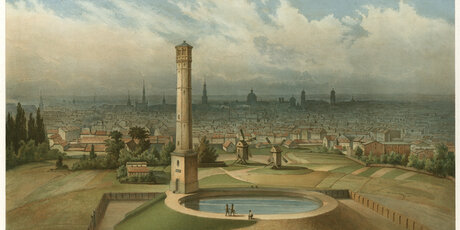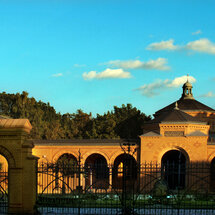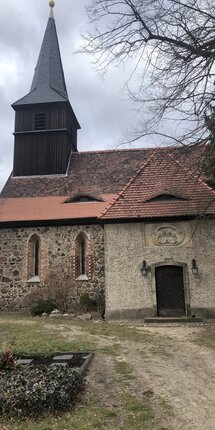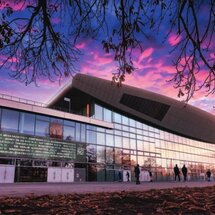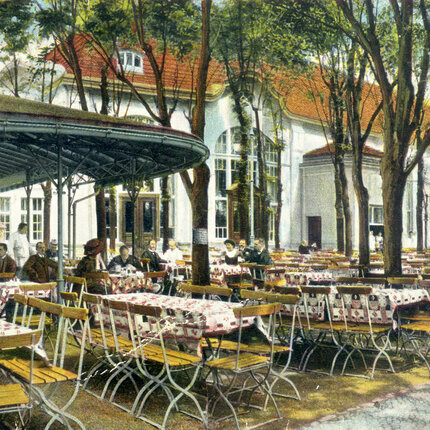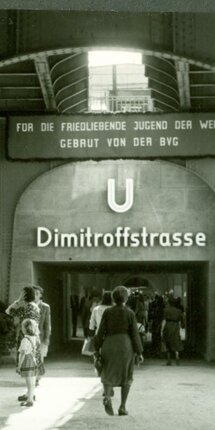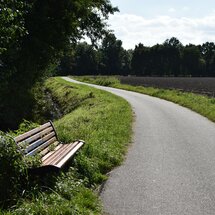
Pankow
Pankow's name appeared for the first time in 1230.A village settlement structure, which dates back to the middle ages, can still be traced today.In the 17th century, the Prussian Royal family extended the Schönhausen Palace and beautiful spacious parks were created. With the Bürgerparkand theSchlossparkaroundthe Schönhausen Palace, two of the most beautiful historical parks of Berlin are to be found in this place.The Town Hall Pankow proves to be a little treasure trove for aesthetics and construction of the late Empire. Craftsmen and farmers were specially brought as settlersinto the area.Against this background,the subdistrictBuchholz was setupas a Huguenot settlement. The 19th century Pankow developed from a village to a city. Wealthy citizens of Berlin built here villa-like summer residences and since the end of the 19th-century, industrial enterprises were also developed, such as the cigarette factory Garbáty.On the former estate,Buchwas built the famous sanatoriums and the hospital complex according to the designs by Ludwig Hoffmann. In 1920 Pankow became part of Berlin and many reform building settlements of this time complemented the rich architectural variety of Pankow. Directly next to the Schlossparkis located theMajakowskiring, where in the 1950s, Walter Ulbricht and numerous other GDR leaders had their home. At some further distance is theSchönholzer Heide with the impressive war memorial of the fallen Red Army soldiers.Pankow is altogether a green district with buildings worth seeing and a lively art scene.
Prenzlauer Berg
Until the middle of the 19th century,the area of Prenzlauer Berg was outside the Berlin city walland was part of the Berliner Feldmark, wheregrain was grown to feed the population of the city. In the context of industrialization and rural exodus, the typical buildings with five-story houses were built and to their magnificent front facades were often connected toseveral backyard buildings. The buildings of the former industrial plants in the middle of the residential areas are also characteristic of the city development of those times. Prenzlauer Berg remained in the WWII mostly free from strong destructions, however,the historically valuable building structures deteriorated dramatically during the era of theGDR. Meanwhile,the intensive reconstruction worksare almost completedand many “neighborhoods” have changed at a rapid pace. Today you will findin Prenzlauer Berga partly lively anda partly peaceful city life in the middle of the fascinating Gründerzeit architecture.
Weißensee
All city subdistricts, which Weißenseeconsists of, have settlement centers that date back to the middle ages of the 13th century. Partly, the village structures have remained until today. In the beginnings of Weißensee as a street village on thetrade route fromBerlin in the northeast,fishing in the lake Weißen was of great importance, later, the area was a popular excursion destination and from the end of the 19th century more and more of a housing area.
In the 19thcentury, the lake Weißen with the palace and amusement park on the shore was one of the most popular destinations of the Berliners.Barely a trace of this history has remained.Today, the promenade on the shore invites you to take a quiet stroll, the all-year-round open lido attracts with seasonal highlightsand opposite at the traditional milk house you can enjoy the lake view. Also, the traces of the great film history of Weißensee are hidden. The first site of the German film industry,wheresilent film classics like the “Das Cabinet des Dr. Caligari”were produced, sets above all a memorial with the cinematic program in the cultural center “Brotfabrik”in the Caligari square. The incorporation of the typical housing estates of the 20s by Bruno Taut and others into Berlin has also imprintedinto the cityscape.Europe’s largest Jewish cemetery inaugurated in 1880 in Weißenseeis a sightseeing destination of special fascination.
